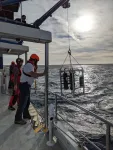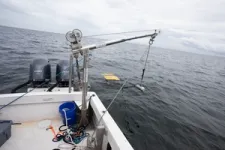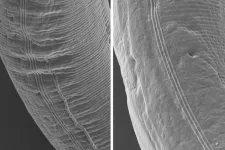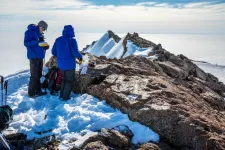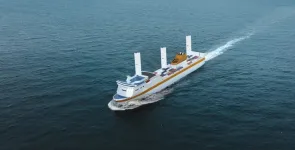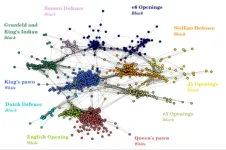The ability to detect red tide blooms at all life stages and cell concentrations is critical to increasing predictive capabilities and developing potential mitigation strategies to protect public health and vital resources.
Current methods used to monitor red tide such as microscopic identification and enumeration, standard flow cytometry, as well as others have limitations. Some of these limitations include constraints on size resolution and ranges of concentration, limited capacity for profiling related to space and time, as well as processing small volumes of samples. While these methods are used operationally, there are time delays with data reporting, and maintenance and personnel costs can be expensive.
Researchers from Florida Atlantic University’s College of Engineering and Computer Science and Harbor Branch Oceanographic Institute have developed the AUTOHOLO, a novel autonomous, submersible, 3D holographic microscope and imaging system, designed to be used in situ (in place) to study marine particles and plankton in their natural environment.
Their study, published in the journal Harmful Algae, is the first to utilize holography to characterize red tide in the field and breaks new ground for monitoring harmful algal blooms (HABs) and tackling limitations associated with current methods used to monitor these blooms.
Using the AUTOHOLO, FAU researchers in collaboration with the University of Minnesota and the Fish and Wildlife Research Institute, Florida Fish and Wildlife Conservation Commission, conducted field measurements in the coastal Gulf of Mexico during an active red tide bloom over the 2020-21 winter season. They also collected surface and sub-surface water samples during these field studies. In the lab, researchers analyzed these samples using benchtop holographic imaging and flow cytometry for validation.
A training dataset of red tide cells – created using holographic images – was used to train a customized existing convolutional neural network (CNN) for automated classification. Researchers also utilized a custom-built towing system designed to help the AUTOHOLO in recording data over large spatial ranges during a bloom.
Across diverse datasets with red tide concentrations at varying levels, researchers showed 90 percent accuracy in their results. They also demonstrated the utility of combining the AUTOHOLO with the towing system to enable characterizing particle abundance over large spatial distances, potentially facilitating rapid characterization of red tide distributions over large areas during bloom events.
“The convolutional neural network used on the processed imagery facilitated rapid detection and analyses of Karenia brevis at all concentration ranges. This confirms the ability for near real-time detection if we integrate the data processing onboard the AUTOHOLO, which would be the next step,” said Aditya R. Nayak, Ph.D., corresponding author and an assistant professor in FAU’s Department of Ocean and Mechanical Engineering. “Since typical red tide cell sizes are well within the instrument resolution range, all bloom phases can be monitored and tracked, including initial bloom development, which is increasingly important to strengthen forecasting and bloom development and modeling.”
Because the AUTOHOLO captures particles over widely varying abundances, even at extremely low concentrations (about 5 particles/mL) and detects cells at low concentrations (less than 5 cells/mL), it has the ability to monitor early bloom phases of red tide, which might not be possible with other methods such as remote sensing.
“Red tide blooms can occupy varying depths in the water column, and surface focused single point sampling or sampling at limited discrete depths may under-sample or miss any population aggregating at a depth,” said Malcolm McFarland, Ph.D., co-author and a researcher in the FAU Harbor Branch Florida Center for Coastal and Human Health. “In the future, the AUTOHOLO could be integrated into existing HAB monitoring networks to enhance the capability of detecting red tide in aquatic environments around the world.”
Study first author is Ranjoy Barua, Ph.D.; a recent FAU College of Engineering and Computer Science graduate. Co-authors are Delaney Sanborn, a doctoral researcher at the University of Minnesota; Lisa Nyman, Ph.D., a past post-doctoral fellow at FAU Harbor Branch; Timothy Moore, Ph.D., a researcher at FAU Harbor Branch; Jiarong Hong, Ph.D., a professor of mechanical engineering, University of Minnesota; and Matt Garrett, an associate research scientist, Florida Fish and Wildlife Conservation Commission.
“All of Florida’s central and southwest Gulf coast beaches and counties have been affected by outbreaks of red tide resulting in devasting effects on marine life as well as impacting human health,” said Stella Batalama, Ph.D., dean, FAU College of Engineering and Computer Science. “Our researchers have designed the AUTOHOLO to be versatile enough to overcome challenges associated with small or fixed sample volumes as well as environments that are visually complex to be used as a warning system for red tide.”
The Florida Fish and Wildlife Conservation Commission funded the study including the entire field effort and the development of the towing system. Researchers used funding from the National Science Foundation Ocean Technology and Interdisciplinary Coordination (OTIC) program to develop the AUTOHOLO.
- FAU -
About Florida Atlantic University:
Florida Atlantic University, established in 1961, officially opened its doors in 1964 as the fifth public university in Florida. Today, the University serves more than 30,000 undergraduate and graduate students across six campuses located along the southeast Florida coast. In recent years, the University has doubled its research expenditures and outpaced its peers in student achievement rates. Through the coexistence of access and excellence, FAU embodies an innovative model where traditional achievement gaps vanish. FAU is designated a Hispanic-serving institution, ranked as a top public university by U.S. News & World Report and a High Research Activity institution by the Carnegie Foundation for the Advancement of Teaching. For more information, visit www.fau.edu.
END
